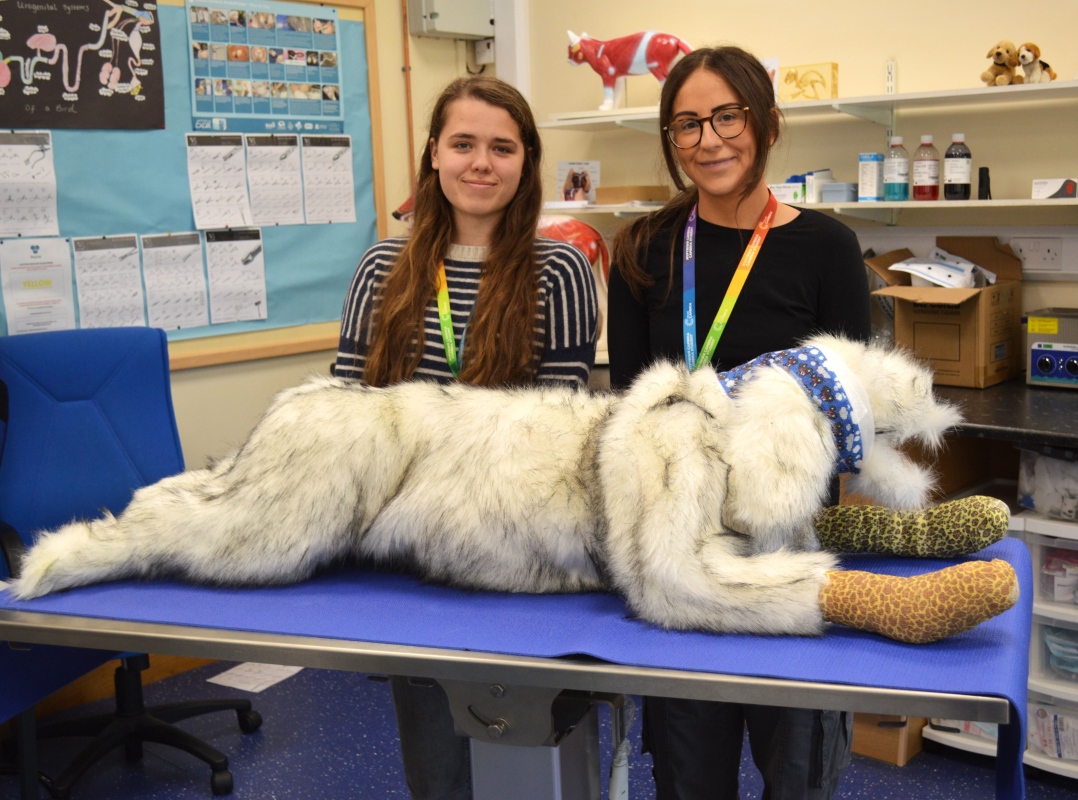PE and sport premium for primary schools
[#item_author]
Physical activity has numerous benefits for children and young people’s physical health, as well as their mental wellbeing (increasing self-esteem and emotional wellbeing and lowering anxiety and depression), and children who are physically active are happier, more resilient and more trusting of their peers. Ensuring that pupils have access to sufficient daily activity can also have wider benefits for pupils and schools, improving behaviour as well as enhancing academic achievement.
The school sport and activity action plan sets out the government’s commitment to ensuring that children and young people have access to at least 60 minutes of sport and physical activity per day. It recommends 30 minutes of this is delivered during the school day (in line with the Chief Medical Officers guidelines which recommend an average of at least 60 minutes per day across the week).
The PE and sport premium can help primary schools to achieve this commitment, providing primary schools with £320 million of government funding to make additional and sustainable improvements to the quality of the PE, physical activity and sport offered through their core budgets. It is allocated directly to schools, so they have the flexibility to use it in the way that works best for their pupils.
How to use the PE and sport premium
Schools must use the funding to make additional and sustainable improvements to the quality of the PE, physical activity and sport they provide. This includes any carried forward funding.
This means that you must use the PE and sport premium to:
develop or add to the PE, physical activity and sport that your school provides
build capacity and capability within the school to ensure that improvements made now are sustainable and will benefit pupils joining the school in future years
You should use the PE and sport premium to secure improvements in the following 5 key indicators.
Engagement of all pupils in regular physical activity, for example by:
providing targeted activities or support to involve and encourage the least active children
encouraging active play during break times and lunchtimes
establishing, extending or funding attendance of school sports clubs and activities and holiday clubs, or broadening the variety offered
adopting an active mile initiative
raising attainment in primary school swimming to meet requirements of the national curriculum before the end of key stage 2 – every child should leave primary school able to swim
The profile of PE and sport is raised across the school as a tool for whole-school improvement, for example by:
actively encourage pupils to take on leadership or volunteer roles that support the delivery of sport and physical activity within the school (such as ‘sports leader’ or peer-mentoring schemes)
embedding physical activity into the school day through encouraging active travel to and from school, active break times and holding active lessons and teaching
Increased confidence, knowledge and skills of all staff in teaching PE and sport, for example by:
providing staff with professional development, mentoring, appropriate training and resources to help them teach PE and sport more effectively to all pupils, and embed physical activity across your school
hiring qualified sports coaches and PE specialists to work alongside teachers to enhance or extend current opportunities offered to pupils – teachers should learn from coaches the necessary skills to be able to teach these new sports and physical activities effectively
Broader experience of a range of sports and physical activities offered to all pupils, for example by:
introducing a new range of sports and physical activities to encourage more pupils to take up sport and physical activities
partnering with other schools to run sports and physical activities and clubs
providing more and broadening the variety of extra-curricular physical activities after school in the 3 to 6pm window, delivered by the school or other local sports organisations
Increased participation in competitive sport, for example by:
increasing and actively encouraging pupils’ participation in the School Games
organising more sport competitions or tournaments within the school
coordinating and entering more sport competitions or tournaments across the local area, including those run by sporting organisations
Your local Active Partnership can provide further advice on how best to use your PE and sport premium. Active Partnerships coordinate the local availability of PE, school sport and physical activity, and can help you find the right sports opportunities and facilities. Where appropriate, you could also ask your local School Games Organiser for advice.
You can also contact the Association for PE, and Youth Sport Trust for support with spending your PE and sport premium.
Active mile
If schools choose to take part in an active mile, they should use existing playgrounds, fields, halls and sports facilities to incorporate an active mile into the school day and develop a lifelong habit of daily physical activity.
Raising attainment in primary school swimming
Swimming and water safety are a national curriculum requirement. It is required that by the end of key stage 2, pupils should be taught to:
swim competently, confidently and proficiently over a distance of at least 25 metres
use a range of strokes effectively, for example, front crawl, backstroke and breaststroke
perform a safe self-rescue in different water-based situations
You can use the PE and sport premium to fund the professional development and training that is available to schools to train staff to support high quality swimming and water safety lessons for their pupils.
You can also use the PE and sport premium to provide additional top-up swimming lessons to pupils who have not been able to meet the national curriculum requirements for swimming and water safety – after the delivery of core swimming and water safety lessons.
You are required to publish information on the percentage of pupils in year 6 who met each of the 3 national curriculum requirements. Further details are in the online reporting section of this guidance.
Further information on training and resources, including advice on the use of the PE and sport premium, is available from Swim England.
Carried forward unspent PE and sport premium grant funding
As a result of the coronavirus (COVID-19) pandemic, we relaxed the ring-fencing arrangements for the PE and sport premium in the 2019 to 2020 academic year, to allow any unspent grant to be carried forward into the 2020 to 2021 academic year. Due to the continuation of the pandemic, this has also been applied to any unspent funding for the 2020 to 2021 academic year.
Any unspent funding that has been carried forward must be spent in full by 31 July 2022. Schools will need to factor this into spending plans for their 2021 to 2022 PE and sport premium allocation. The conditions of grant reflect this.
What your funding should not be used for
You should not use your funding to:
employ coaches or specialist teachers to cover planning preparation and assessment (PPA) arrangements – this should be funded from your core staffing budgets
teach the minimum requirements of the national curriculum – apart from top-up swimming lessons after pupils’ completion of core lessons (or, in the case of academies and free schools, to teach your existing PE curriculum)
fund capital expenditure – DfE does not set the capitalisation policy for schools, if you are in any doubt as to whether your proposed spending is deemed as capital expenditure, you should first speak with your school business manager or school accountant and their auditors
Accountability
School compliance
You are accountable for how you use the PE and sport premium funding allocated to you. You must spend the grant for the purpose it was provided – to make additional and sustainable improvements to the PE, sport and physical activity offered. Schools and local authorities must follow the terms and conditions in the conditions of grant.
Online reporting
You must publish details of how you spend your PE and sport premium funding by the end of the summer term or by 31 July 2022 at the latest.
Online reporting must clearly show:
the amount of PE and sport premium received
a full breakdown of how it has been spent
the impact the school has seen on pupils’ PE, physical activity, and sport participation and attainment
how the improvements will be sustainable in the future
You are also required to publish the percentage of pupils within your year 6 cohort in the 2021 to 2022 academic year who met the national curriculum requirement to:
swim competently, confidently and proficiently over a distance of at least 25 metres
use a range of strokes effectively, for example, front crawl, backstroke and breaststroke
perform safe self-rescue in different water-based situations
Attainment data for year 6 pupils should be provided from their most recent swimming lessons. This may be data from years 3, 4, 5 or 6, depending on the swimming programme at your school. It is essential to retain attainment data from swimming lessons in years 3 to 5 to be able to report this accurately in year 6.
To help you plan, monitor and report on the impact of your spending, partners in the physical education and school sport sector have developed a template. The template can be accessed through the Association for PE and Youth Sport Trust websites. It is recommended that the template is used to record your activity throughout the year, as well as for publication at the end of the school year.
Review of online reports
School online reporting will be monitored by DfE. We will sample a number of schools in each local authority to review what they have published on their use of the funding and their swimming attainment.
Schools are expected to spend the grant for the purpose that it was provided only, in accordance with the conditions of grant, to make additional and sustainable improvements to the PE, sport and physical activity provided.
Eligibility
Most schools with primary-age pupils receive the PE and sport premium in the academic year 2021 to 2022, including:
schools maintained by the local authority
academies (includes free schools)
special schools (for children with special educational needs or disabilities)
non-maintained special schools (schools for children with special educational needs that the Secretary of State for Education has approved under section 342 of the Education Act 1996)
city technology colleges (CTCs)
pupil referral units (PRUs provide education for children who cannot attend a mainstream school)
general hospitals
The following types of schools do not receive this funding:
nursery schools
studio schools
university technical colleges (UTCs)
independent schools (except for non-maintained special schools, which do receive the funding)
How we calculate funding
Schools receive PE and sport premium funding based on the number of pupils in years 1 to 6.
In cases where schools do not follow year groups (for example, in some special schools), pupils aged 5 to 10 attract the funding.
In most cases, we determine how many pupils in your school attract the funding by using data from the January 2021 school census.
If you are a new school or a school teaching eligible pupils for the first time in the academic year 2021 to 2022, we will base your funding on data from the autumn 2021 school census.
Funding for 2021 to 2022
Schools with 16 or fewer eligible pupils receive £1,000 per pupil.
Schools with 17 or more eligible pupils receive £16,000 and an additional payment of £10 per pupil.
You can access the published allocations for 2021 to 2022 and read the conditions of grant for 2021 to 2022.
The breakdown of funding for the academic year 2020 to 2021 is also available.
Maintained schools, including PRUs and general hospitals
Maintained schools, including PRUs and general hospitals, do not receive funding directly from DfE. We give the funding to your local authority and they pass it on to you.
We give local authorities PE and sport premium funding for maintained schools in 2 separate payments. They receive:
7/12 of your funding allocation on 29 October 2021
5/12 of your funding allocation on 29 April 2022
If you are a new maintained school or if you are teaching eligible pupils for the first time in the 2021 to 2022 academic year, local authorities receive:
7/12 of your funding allocation on 28 February 2022
5/12 of your funding allocation on 29 April 2022
Academies, free schools and CTCs
We send academies (including free schools) and CTCs their PE and sport premium funding in 2 separate payments. You receive:
7/12 of your funding allocation on 1 November 2021
5/12 of your funding allocation on 3 May 2022
If you are a new academy (includes a free school) or CTC, or if you are teaching eligible pupils for the first time in the 2021 to 2022 academic year, you receive:
7/12 of your total funding allocation on 1 March 2022
5/12 of your total funding allocation on 3 May 2022
Non-maintained special schools
We send non-maintained special schools their PE and sport premium funding in 2 separate payments. You receive:
7/12 of your funding with the first payment you have scheduled with us after 1 November 2021
5/12 of your funding with the first payment you have scheduled with us after 4 May 2022
Further guidance
You can get further guidance at:
Association for PE – advice on the PE premium
Youth Sport Trust – primary PE and sport premium
Sport England’s website which contains advice on using the PE and sport premium effectively see the
Swim England’s website for advice and resources on primary school swimming and water safety
UK coaching’s primary schools toolkit for advice on employing sports coaches for your school
DfE teacher blog for best practice examples of how schools are using their premium effectively
what works in schools and colleges to increase levels of physical activity among children and young people from Public Health England











Responses